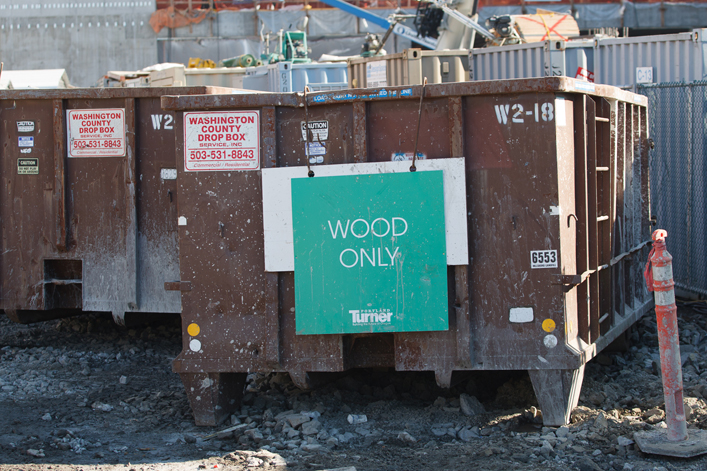
 Turner Construction Company has implemented TurnerTracker, a new, cloud-based tool for tracking construction waste diverted from landfills.
Turner Construction Company has implemented TurnerTracker, a new, cloud-based tool for tracking construction waste diverted from landfills.
Turner formalized its commitment to sustainability in 2004, including establishing company-wide goals for diverting construction waste from landfills. Since then, the company has diverted a total of more than 2 million tons of construction material from landfills, or four times the weight of the world's tallest building, the Burj Khalifa. In 2014 alone, Turner projects reported a diversion rate of 91 percent, a total of more than 446,000 tons of recycled, re-used or salvaged material — enough to fill Yankee Stadium one and a half times.
Diverted material is sorted by type and prepared for its new life; concrete is crushed to become aggregate or fill and rebar is melted down and reformed. In some cases, waste material is diverted for re-use on the same project. For example, at the Sacramento Entertainment and Sports Center project, future home of the Sacramento Kings, the project team is recycling more than 90 percent of their construction waste (total waste during the demolition phase was estimated at 96,000 tons), including crushing demolished concrete to serve as part of the new arena's foundation.
“We recognize that our responsibility includes not just what we build, but how we build it,” said Michael Deane, Turner's chief sustainability officer and Construction Materials Recycling Association's Recycler of the Year, 2012. He continued, “We are aware of the effect our operations — including jobsite energy and water efficiency, and waste diversion. TurnerTracker is a tool that will help us monitor and report on our construction waste recycling in a much more streamlined and detailed way. We are measuring construction waste diversion as one piece of our broader effort to achieve our sustainable goals.”
TurnerTracker is integrated with the company's enterprise software and project management system. With real-time, mobile access, TurnerTracker has the capacity to store salvaged and re-used material data, auto-populate LEED submittal forms, create waste management plans, which are required on all the company’s jobs and generate recycling trend reports from stored data. It also includes detailed tracking of diverted material types, including categories for metal, wood, paper, gypsum and concrete.


 Join our thriving community of 70,000+ superintendents and trade professionals on LinkedIn!
Join our thriving community of 70,000+ superintendents and trade professionals on LinkedIn! Search our job board for your next opportunity, or post an opening within your company.
Search our job board for your next opportunity, or post an opening within your company. Subscribe to our monthly
Construction Superintendent eNewsletter and stay current.
Subscribe to our monthly
Construction Superintendent eNewsletter and stay current.